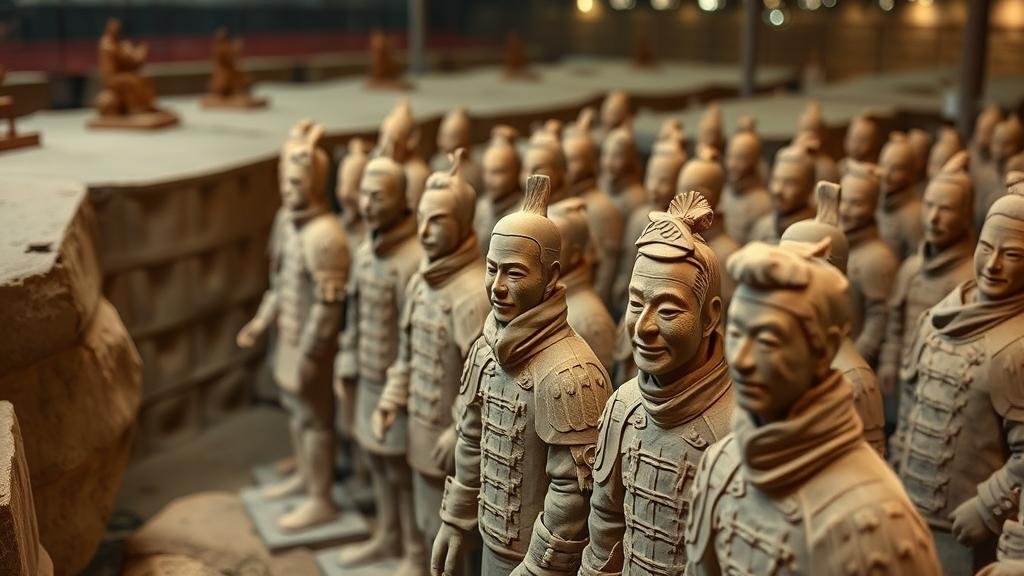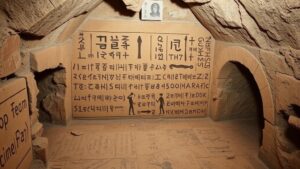Investigating the “Terracotta Warriors,” an army of life-sized figures buried with China’s first emperor.
Investigating the Terracotta Warriors
The Terracotta Warriors, a remarkable collection of life-sized figures, were unearthed in 1974 near Xian, Shaanxi province, China. This extraordinary archaeological discovery includes thousands of statues created to accompany Qin Shi Huang, the first emperor of China, in the afterlife. The site has since been recognized as one of the most significant archaeological finds of the 20th century, attracting millions of visitors and scholars keen to understand its historical and cultural implications.
The Historical Context
Qin Shi Huang ascended to the throne in 246 BC and unified China in 221 BC, establishing the Qin Dynasty. His reign marked a pivotal shift in Chinese history, following centuries of fragmented states during the Warring States Period. The construction of the Terracotta Army began shortly after his ascension, remaining in the shadows until its unearthing more than two millennia later.
The construction of this vast army is believed to have started around 210 BC and took approximately 38 years to complete. The sheer scale of the project reflects both the emperors ambitions and the resources available during that era, leading to the conscription of thousands of laborers, craftsmen, and slaves.
Archaeological Findings
Upon the discovery of the site, archaeologists initially uncovered a large pit containing around 8,000 soldiers, along with horses and chariots. Each figure varies in height, uniform, and facial features, reflecting the diversity of the sunken army. Some of the key findings include:
- Figures with Distinctive Features: Each warrior possesses unique facial expressions and hairstyles, showcasing the level of craftsmanship and attention to detail.
- Military Formation: The soldiers are arranged in a strategic military formation, which mirrors the battle tactics of Qin Shi Huang’s armies.
- Weapons and Armor: Many figures were originally equipped with real weapons, including swords, spears, and crossbows, indicating their functional role as protectors of the emperor in the afterlife.
Construction Techniques
The construction of the Terracotta Army reveals much about ancient Chinese technology and artistry. The figures were made using local clay and fired in kilns, a process that required skilled artisans. Instead of producing each statue in one piece, craftsmen sculpted them in sections, later assembling them to create the final figure. This manufacturing process enabled the production of thousands of soldiers efficiently and ensured a uniformity that still showcased individuality among the warriors.
Significance and Cultural Impact
The Terracotta Warriors are more than just remarkable archaeological artifacts; they symbolize the might of the Qin Dynasty and offer insights into the beliefs and practices of ancient China. Their existence signifies the importance of the afterlife in Chinese culture and the lengths to which rulers would go to secure their legacies. Also, the discovery has sparked interest in Qin Shi Huangs reign, leading to extensive research on his policies, military campaigns, and the societal structure of the time.
Modern-Day Implications
Today, the Terracotta Warriors stand as a UNESCO World Heritage Site, designated in 1987, and continue to fascinate people worldwide. They serve as a focal point for discussions around cultural heritage, preservation, and the ethical considerations surrounding archaeological tourism. Their presence has stimulated regional economies and encouraged innovative research in archaeology and historical studies.
Actionable Takeaways
For anyone interested in exploring the Terracotta Warriors or the broader context of ancient Chinese history, consider the following:
- Visit the Site: Plan a trip to the Terracotta Army site in Xian, where you can witness these ancient figures up close and engage with knowledgeable guides.
- Read Up on the History: Explore books and academic papers about Qin Shi Huang and the Qin Dynasty to fully appreciate the historical significance of the warriors.
- Participate in Educational Programs: Join lectures, workshops, or online courses focusing on archaeological methods and ancient Chinese civilization.
To wrap up, the Terracotta Warriors are not only a testament to ancient craftsmanship and military power but also a poignant reminder of the lasting legacy of one of historys most notable figures, Qin Shi Huang. By understanding and appreciating this extraordinary archaeological site, we gain invaluable insights into the culture and history of ancient China.



